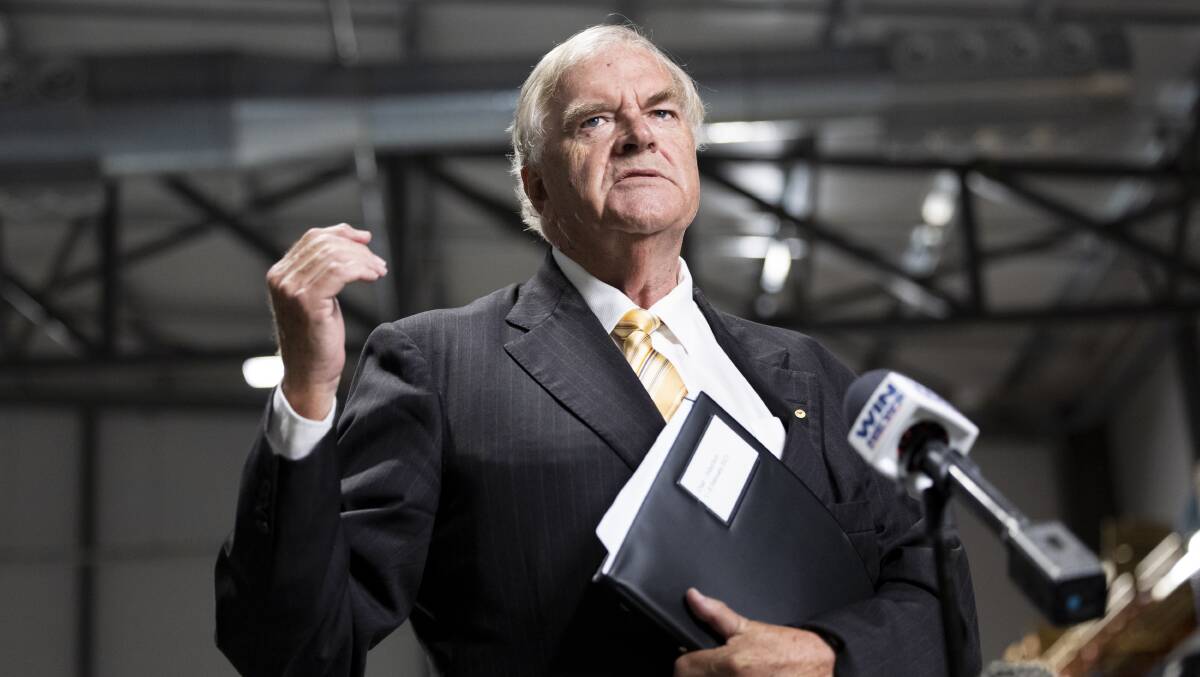
It seems nobody now disputes that the Frontier Wars should have their place of prominence at the Australian War Memorial.
Subscribe now for unlimited access.
or signup to continue reading
After decades of resistance to the idea, the leadership at the institution now accepts there should be a substantial part of the expanded museum section devoted to the conflicts between Indigenous people and the forces of the British colonists.
The new head of the Memorial's ruling council accepts that the conflicts amounted to a war. As Kim Beazley told The Canberra Times: "There was a substantial level of self-defence. There were terrible massacres and also more structured wars. There was very good Aboriginal leadership. Sometimes there were peace discussions."
This, then, was a war, conducted by Australians on both sides, fought by the ancient line of Australians resisting the new Australians determined to dominate land.
How, we wonder, could this not be reflected at the Australian War Memorial?
But the debate is not over. Mr Beazley wants a "substantial" representation - but how substantial is substantial? It is a slippery word whose interpretation would give lawyers endless fun and income.
We have made a great stride forward. It is now time to be clearer on what the next steps should be.
Historians who are still unconvinced by the change of tone at the Memorial point out that other colonial wars in which Australian troops were involved are as nothing compared to the scale of the Frontier Wars. In Sudan in 1885, for example, fewer than ten Australians died, and none of them in battle.
Accordingly, to mark the Frontier Wars on a similar level as this conflict would be a false equivalence.
There needs to be a full section at the War Memorial, ideally a gallery, devoted to the war between Australians. It would be good if the leadership at the War Memorial made that clear.
There is another issue which they need to resolve.
Overlooking the main courtyard are 26 stone sculptures, two of them are of Aboriginal people and the other 24 are of animals.
In our day and age, it is beyond comprehension how Aboriginal people could be equated to animals, but that is how it was in 1941 when the sculptures were carved and installed.
They were removed five or so years ago and then re-installed, but in the case of the two human beings without the spouts which technically meant that the faces were gargoyles.
There had been consultation with Indigenous representatives who found the spouts offensive because it turned the faces into drains.
But times have moved on and more needs to be done.
The choice is between removal of the sculptures of the Indigenous man and woman or of attaching some sort of explanation and recognition to them.
This wording would explain why they were there. It would be an illumination of the dark past.
The President of the Australian Historical Association told this publication he was in favour of the latter.
"A plaque created through consultation with the people affected or interested can be valuable as an occasion for recognition and discussion, as much as anything else," Frank Bongiorno, professor of history at the ANU, said.
This seems sensible. But as he recognises, there needs to be consultation. If it turned out there was deep anger among Indigenous people about them remaining, there would need to be a rethink.
All of this, though, does not diminish the fact that progress has been made. It is accepted that those who fought colonialism deserve what Mr Beazley calls "the dignity of resistance".
We have made a great stride forward.
It is now time to be clearer on what the next steps should be.
Send us a letter to the editor
- Letters to the editor should be kept to 250 or fewer words. To the Point letters should not exceed 50 words. Reference to The Canberra Times reports should include a date and page number. Provide a phone number and address (only your suburb will be published). Responsibility for election comment is taken by John-Paul Moloney of 121 Marcus Clarke Street, Canberra. Published by Federal Capital Press of Australia Pty Ltd.

